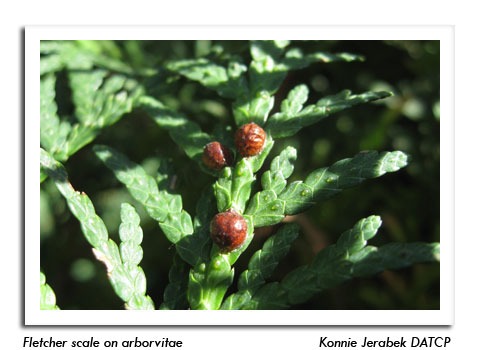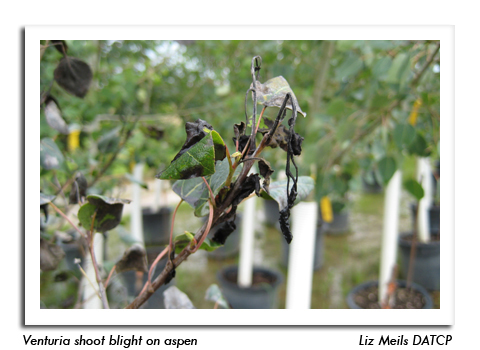
 |
|
|
Nursery & Forest
Volume 59 Number 11 Date 07/17/2014 COTTONY MAPLE SCALE - The white, cottony egg masses produced by this pest of deciduous trees and shrubs were observed on maple 'Autumn Blaze' trees at a nursery in Winnebago County. Hatch of mobile crawlers is under way in southern and central areas of the state where 900-1,200 degree days (base 50°F) have been surpassed, as far north as Eau Claire and Hancock. Cottony maple scale is generally considered only a nuisance pest, populations are cyclical and peak every few years, causing significant branch and twig dieback when levels are high. Chemical treatments directed against the crawler stage should be considered only after two consecutive years of heavy infestation. Light infestations may be pruned out and destroyed. VENTURIA SHOOT BLIGHT - Quaking aspens at nurseries in Jackson and Winnebago counties are showing the black, blighted shoots indicative of this fungal disorder. The initial symptoms appear in May as irregular brown or black spots on the leaf surfaces, which later expand to new shoots and cause a characteristic shepherd's crook. Only young shoots and leaves are susceptible to this disease, though repeated attacks of the fungus on new growth can weaken and predispose trees to invasion by other pathogens. Secondary infection cycles can occur throughout the shoot elongation period, particularly during prolonged wet periods. The fungus overwinters in infected shoots, so pruning blighted shoots below the margin between healthy and diseased tissue is recommended. FLETCHER SCALE - Nursery inspectors report that mobile crawlers, the life stage most susceptible to insecticidal control, are emerging in Rock County. This scale pest of arborvitae, juniper and yew can cause yellowing, premature needle drop or branch dieback. For severe infestations, horticultural oils or soaps, insect growth regulators, or conventional insecticides may be used as soon as the crawlers are noticed. -- Ellen Hermanson, DATCP Nursery Inspector 


|
|
|